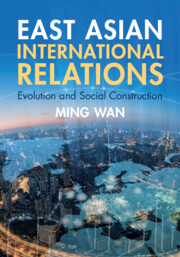Book contents
- East Asian International Relations
- East Asian International Relations
- Copyright page
- Dedication
- Contents
- Figures
- Maps
- Tables
- Preface
- Acknowledgments
- Abbreviations
- Part I Introduction and Theory
- Part II Historical Background
- Part III East Asia since 1945
- 5 East Asian Security
- 6 East Asian Growth
- 7 East Asian Money
- 8 East Asian Regionalism
- 9 The U.S.-China Strategic Rivalry
- 10 Democracy versus Autocracy
- References
- Index
6 - East Asian Growth
from Part III - East Asia since 1945
Published online by Cambridge University Press: 28 November 2024
- East Asian International Relations
- East Asian International Relations
- Copyright page
- Dedication
- Contents
- Figures
- Maps
- Tables
- Preface
- Acknowledgments
- Abbreviations
- Part I Introduction and Theory
- Part II Historical Background
- Part III East Asia since 1945
- 5 East Asian Security
- 6 East Asian Growth
- 7 East Asian Money
- 8 East Asian Regionalism
- 9 The U.S.-China Strategic Rivalry
- 10 Democracy versus Autocracy
- References
- Index
Summary
Chapter 6 studies East Asian economic growth and development strategy. It starts with a section on how economic growth and the theory of growth have been constructed. It then discusses the East Asian economic miracle – rapid growth in GDP per capita with relative equity. Most East Asian countries have chosen a hybrid path, often emulating each other and building on recent successes. Most adopted the developmental-state strategy to different degrees and at different points, and they generally view modernization as a way to regain their past glories. This chapter focuses on material wealth production, with a particular emphasis on how East Asian nations adapt and innovate. It also discusses the consequences of East Asian growth in terms of the rise and fall of nations, the “rich nation, strong army”, the contest of political systems, and the environment. Uneven economic growth is a source of a shifting balance of power.
Keywords
- Type
- Chapter
- Information
- East Asian International RelationsEvolution and Social Construction, pp. 157 - 189Publisher: Cambridge University PressPrint publication year: 2024

